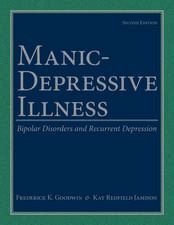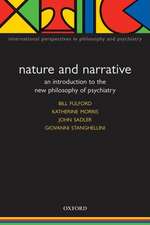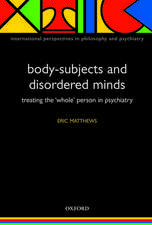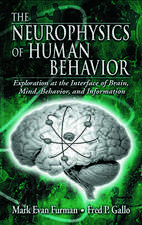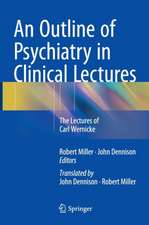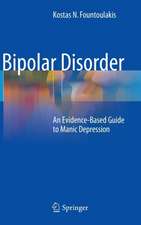To Live and to Die: When, Why, and How
Editat de R. H. Williamsen Limba Engleză Paperback – 12 feb 2012
| Toate formatele și edițiile | Preț | Express |
|---|---|---|
| Paperback (2) | 392.21 lei 6-8 săpt. | |
| Springer Berlin, Heidelberg – 12 feb 2012 | 392.21 lei 6-8 săpt. | |
| Springer – 6 iun 1974 | 392.60 lei 6-8 săpt. |
Preț: 392.21 lei
Nou
Puncte Express: 588
Preț estimativ în valută:
75.06€ • 81.50$ • 63.05£
75.06€ • 81.50$ • 63.05£
Carte tipărită la comandă
Livrare economică 22 aprilie-06 mai
Preluare comenzi: 021 569.72.76
Specificații
ISBN-13: 9783642952401
ISBN-10: 3642952402
Pagini: 368
Ilustrații: XIX, 346 p.
Dimensiuni: 155 x 235 x 19 mm
Greutate: 0.51 kg
Ediția:Softcover reprint of the original 1st ed. 1973
Editura: Springer Berlin, Heidelberg
Colecția Springer
Locul publicării:Berlin, Heidelberg, Germany
ISBN-10: 3642952402
Pagini: 368
Ilustrații: XIX, 346 p.
Dimensiuni: 155 x 235 x 19 mm
Greutate: 0.51 kg
Ediția:Softcover reprint of the original 1st ed. 1973
Editura: Springer Berlin, Heidelberg
Colecția Springer
Locul publicării:Berlin, Heidelberg, Germany
Public țintă
ResearchCuprins
1 Prologue.- Why live and why die?.- Some guidelines for living and dying.- Quality and quantity of population.- Childhood and adolescence.- Student riots and demands.- Careers.- Anxieties and fears.- Drug use and alcoholism.- Crime.- Equalization of people.- Prejudice and discrimination.- Marriage.- Euthanasia.- Summary.- 2 Metabolism, Mentation, and Behavior.- Some factors in normal mentation.- Neurotransmitters.- Acetylcholine.- Catecholamines.- Serotonin.- Learning and memory.- Sleep.- Coma.- Metabolic disorders associated with abnormal mentation.- Genetic disorders.- Endocrine disorders.- Mental depression and mania.- Schizophrenia.- Summary.- References.- 3 Body, Mind, and Soul.- Conclusions.- References.- 4 On the Origin of Life.- The concept.- The search for an answer.- The past.- Some thermodynamics and kinetics.- Self-replication.- Evolution.- Does life exist elsewhere?.- References.- 5 Genetic Engineering: Present and Future.- Gene action: DNA ? RNA ? protein.- Prevention of the birth of children with genetic defects.- Mutations.- Genetic counseling.- Intrauterine diagnosis and selective abortion.- Indications for intrauterine diagnosis.- Chromosomal disorders.- Enzyme deficiencies.- X-chromosome diseases.- Determination of the sex of the baby.- Artificial fertilization.- Cloning.- Therapy of genetic diseases without changing the abnormal gene.- Gene replacement with normal DNA: true “genetic engineering”.- Preparation of the DNA for gene replacement.- Insertion of the DNA into recipient cells.- Integration of the replacement DNA into the host cell chromosome.- Expression of the new gene in the cell.- Potential applications.- Pitfalls.- References.- 6 The Climax of World Population Growth.- Is world population growth slowing down?.- The alternativepossibilities.- 7 Propagation, Modification, and Termination of Life: Contraception, Abortion, Suicide, Euthanasia.- Quantity and quality of propagation.- Methods of population control.- Sterilization and castration.- Abortion.- Amniocentesis.- Better control of the quantity and quality of propagation.- Promoting reproduction in some instances.- Modification of genetic patterns.- Organ transplantation.- Termination of life.- Suicide.- Euthanasia.- Negative euthanasia.- Positive euthanasia.- Discussion of euthanasia.- a. Religion.- b. Laws.- c. Traditions of society.- d. Physician’s role.- e. The role of the patient and his family.- Conclusions.- References.- 8 An Alternative to the Ethic of Euthanasia.- The ethic of euthanasia.- An ethic of benemortasia.- References.- 9 Ethics and Euthanasia.- The ethical and the pre-ethical.- Elective death.- Means and ends.- 10 Ethical and Moral Problems in the Use of Artificial and Transplanted Organs.- The patient-recipient.- The living donor.- The potential cadaveric (dying) donor.- Families of recipients and donors.- The medical team: physicians and surgeons.- Society.- The future.- References.- 11 Management of the Sick with Kindness, Compassion, Wisdom, and Efficiency.- Medicine as a career.- Settings for optimal practice.- The physician’s management of the patient.- Attitudes and responsibilities of patients.- Death.- References.- 12 Life and Death: Lessons from the Dying.- The meaning of death in the history of man’s life.- The quality of life and the acceptance of death.- References.- 13 The Here and the Hereafter: Reflections on Tragedy and Comedy in Human Existence.- 14 Too Many and Too Few Limitations for Children.- Introduction: The need for historical perspective.- And today.- Some cases in point.- Somerecommendations.- References.- 15 Careers and Living.- Rewards for success.- Selecting goals.- Some general considerations.- Selection of specific goals.- Attaining goals.- Obligations and responsibilities.- The role of leaders.- Summary and conclusions.- 16 Advantages and Disadvantages of Technological Achievements.- The ambivalence of human aspirations.- Agriculture.- Mass production and automation.- Shelters.- Settlements.- The population explosion.- Health care and emotional well-being.- Publishing and reproduction.- Telecommunications.- Changing goals for improved quality of life.- Summary.- References.- 17 Causes and Effects of Excessive Fears, Anxieties, and Frustrations.- The basis for emotion.- Instinct and intelligence.- What is behavior?.- Adaptation to society.- Sensory overload.- Sensory deprivation.- Patterns of behavior involving internal organs.- The stress of change.- Toward a science of man.- Man’s nature and his needs.- Learning man’s place in nature.- Needs for new knowledge.- References.- 18 Causes and Management of Current Anxieties and Frustrations in Universities.- Social change in midcentury America.- Rapid change, confusion, and disillusionment.- The effects of violence.- The university’s response.- The web of morality.- References.- 19 The Social and Psychiatric Aspects of Psychotropic Drug Use.- Sources of irrational drug attitudes.- The socialization of drug use.- The medical socialization of drug use.- Current ideological confusions.- Intrinsic factors in drug misuse.- Prediction of risk.- Conclusion.- 20 Causes and Management of Criminals: Psychiatric Aspects.- Causation—the definitional problem.- Causation—the dilemma of understanding.- Causation—the wish for a simple explanation.- Causation—mental illness and crime.-Management—the atrocious nonsystem of corrections.- Management—principles of correctional management.- Management—effects of institutionalization.- Mangement—the incorrigible few.- Management—outside the walls—the role of the community.- Management—the role of science.- References.- 21 The Criminal Justice System: Crimes, Criminal Processes, and Sentencing.- What is criminal conduct?.- The process of labeling a criminal.- Sentencing the criminal.- Conclusions.- References.- 22 Some Major Guides for Laws.- The recognition of a problem.- What law does.- How the rules are formulated.- Reformation of values and goals.- Promoting goal attainment.- Reconciling professional technology and societal values.- Managing trouble.- Resolving disputes.- Conclusion.- 23 Psychosocial and Religious Aspects of Medical Ethics.- I. Religion and morality.- Background.- Personal versus social morality.- II. The priest and physician.- III. Human values in medical ethics.- The reality of the human.- The integrity of the human.- The unity of the human.- The limitations of the human.- The transcendence of the human.- The summation of human values.- IV. Medical ethics in death and dying.- V. Summary.- References.- 24 Marriage: Whence and Whither?.- A short history of marriage.- Marriage in transition.- Marriage as relationship—the new focus.- Marriage attacked and defended.- Conclusion.- References.- 25 Changing Views on Homosexuality, Transvestism, and Transsexualism.- Homosexuality.- The homosexual spectrum.- Homosexuality: Is it an illness?.- The legal aspects.- Erotic reorientation of the homosexual.- Transvestism.- Varieties of transvestism.- Helping the transvestite.- Transsexualism.- The development of gender identity.- Helping the transsexual through surgical and hormonaltherapy.- Summary and conclusions.- References.- 26 Equality and Inequality: Facts and Values.- 27 Epilogue.- Body, mind, and soul in life, death, and the hereafter.- Some major effects of organ transplantation.- a. Effect of transplanting a normal brain from a woman into a man on his sex interests and actions.- b. Effect of transplanting a heart or brain from a black man into a white man on his reactions of racial prejudice and discrimination.- c. Effect of transplanting a normal brain from a white man into a black man on his reactions of racial prejudice and discrimination.- d. Effect upon abnormal mentation of transplanting a normal brain.- e. Effect upon abnormal mentation of transplanting a normal liver.- f. Effect upon normal mentation of transplanting an abnormal liver.- g. Effect of gonad transplantation upon the progeny.- Creation and propagation of life; population increase.- Too many and too few limitations for children.- Excessive fears, anxieties, and frustrations.- a. Campus anxieties, frustrations, and protests.- b. Careers.- c. Crime.- Technology in the welfare of man.- Marriage.- Sex deviants.- Management of the sick and dying.- Euthanasia.- Need for adjusting guidelines in law and religion.- Equalization of unequal people.- Final summary and conclusions.

